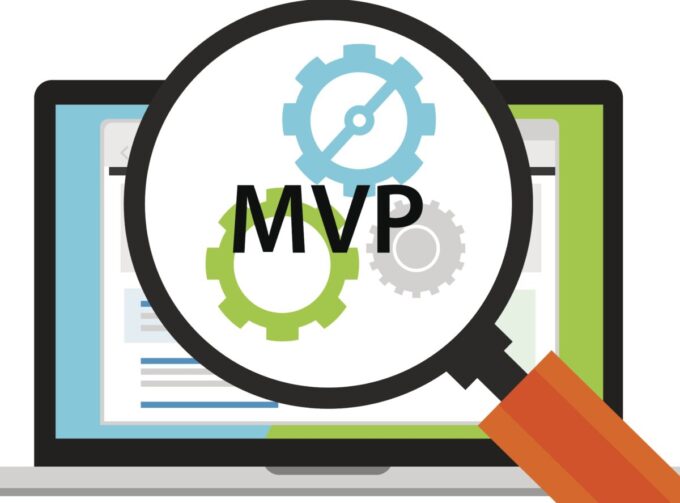Startups have to experiment. They have to find more cost-effective ways to do business – with the same results. Often, that’s not easy. For instance, how will you know whether your manufacturing product will be a hit or a miss in the market? How will you know whether it can cater to your potential clients’ needs or not?
How will you know if it needs a few improvements, innovations or touch-ups to make it more susceptible to success? How do you know the new business or start-up you’re planning will be a success?
Well, if these questions plague you often and you’ve been searching for the solution for a long time, then worry not because you’ve come to the right place. The answer to all of this is as short as it gets—MVP.
What is MVP?

The complete form of it is a Minimum Viable Product. Eric Ries, an entrepreneur and author for the book ‘The Lean Startup,’ introduced the concept. According to him, MVP is that version of a product with just enough features required for extracting feedback from potential clients or customers.
Development of an MVP item or MVP app means, development of the item with its most essential elements for a survey purpose Check more details at qulix.com. A lot less work goes into developing it than the final product because the focus is on initial, cannot-do-away-with features instead of on the finishing or extravagant qualities of the product.
It helps evaluate, validate the need for a product in the market and the steady development of an existing one. It enables the manufacturers to get an idea about how the market will react to their product or business model. Additionally, manufacturers can learn whether their product will appeal to the customers or not and gain knowledge about its interest.
Agile methodology refers to working on or managing a project by separating it into several phases. MVP plays a central role here as this methodology uses iterating and validating products based on user input. The concept of MVP performs well in technically oriented products. It also works well for technical users who are often keen on providing their insight into a product.
There are various reasons why a company can choose to release a minimum viable product:
- Want to test the idea with new users before committing to a large budget for the product’s development.
- Release the product into the market as soon as possible.
- Evaluate what works in favor of the company
- Minimize the time and resources spent on the development.
What Are The Characteristics of MVP?

A team of an MVP builds a product without wasting any time on additional features. They will strive to focus and develop on those features that the customers have assessed. Moreover, the team will make sure not to spend spare time, energy, and resources on unlikeable products.
It can lead to the product getting transformed dramatically or even abandoned as time passes by. It is crucial to understand that the whole focus is learning the development of a product by collecting information from certified customers.
Instead of relying on marketing hypotheses with forecasts, it is better to observe users as they utilize the product. Here are additional vital characteristics about MVP to keep in mind:
- MVP always offers feedback for future development.
- It places enough value for customers to decide whether they may use or buy it willingly.
- It demonstrates enough future-benefits.
What Does MVP Stand for in Business?

MVP in business means setting up the first workable, saleable version of the newly conceptualized business idea. Eric Ries defined it in his book The Lean Startup. The term, though, was coined and first described by Frank Robinson in 2001.
In simple words, it is a prototype that is made focussing on the most essential part of the item or service you want to make available to the market. It is not the final or finished item. But, it is not incomplete either. It has essential features that a group of customers tests. And after acquiring their feedback and making the necessary changes, the final one is released.
MVP Start-ups

MVP start-ups or MVP lean start-up is a methodology that aims at promoting value-producing practices with the least effort and material. The expenditure is kept minimum for producing an item with just enough features to be used and given feedback by the first set of customers.
This helps the start-ups understand the market and customers’ needs better, so they can succeed and flourish faster. This methodology will help you have a clear concept right from the initial days of your start-up; it’ll reduce business and production errors or design errors to a great extent and help you come up with products that are in tune with your customers’ needs of the market.
It’ll help your business to take off in no time. Facebook, Twitter, DropBox are some of the start-ups that started and succeeded with MVP. Visit the website to know more about developing software like the ones mentioned above.
MVP Companies

These companies help you validate your business or start-up using the MVP methodology. These companies consist of experts who launch your Minimum Viable Products and analyze the data post receiving feedback. These companies also help you with suggestions on how to improve your business and product.
They allow you to understand the market and plan your actions accordingly. Your business is guaranteed to flourish better with this technology. It is the most efficient way of business and production planning. These companies also focus on the clients’ safety. Proxy servers help increase security.
MVP Customers

Acquiring people to use and provide feedback on your Minimum Viable Product is a crucial part of the process. There are several types of people who can be seen as such potential clients. The kind of customers you get depends on your planning and strategy.
Some like using these for free. According to them, they are doing you a favor by using the basic version of your product, which has required the least effort for production. Again, people happily pay for these items or services and willingly provide feedback with essential insights. Such customers are probably the most desirable, especially for a start-up.
Then there are the unwilling ones who need to be convinced to make them try your product. They are the hardest to crack and acquire. Customers are the most essential part, without whom the tech will be of no use. Based on their review and feedback, you gain a perspective regarding the desirability and saleability of your service.









